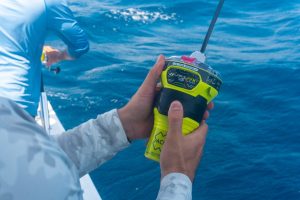Emergency Position Indicating Radio Beacons (EPIRBs) are vital safety devices for maritime operations, designed to alert search and rescue (SAR) services in emergencies. These beacons, once activated, transmit a distress signal that can be detected by satellites and SAR teams, facilitating quick and precise location tracking of vessels or individuals in distress at sea.

Registration and Usage: Registration of EPIRBs with national SAR authorities is mandatory, enhancing the efficiency of rescue operations and aiding in the verification of distress alerts to prevent false alarms.
Types of EPIRBs: There are various types of EPIRBs, including COSPAS-SARSAT, INMARSAT E, and VHF CH 70 models, each designed for specific sea areas and offering different features.
EPIRBs contain two radio transmitters, utilizing the 406 MHz frequency for global distress signaling. Integration with the COSPAS-SARSAT satellite system enables efficient detection and location determination through techniques like Doppler Shift. EPIRBs serve as a secondary means of alerting SAR, complementing other distress signaling methods and ensuring a layered safety approach.

Activation and Battery Life: EPIRBs can be activated manually or automatically (via hydrostatic release), with battery life designed to support prolonged signal transmission, ensuring that rescuers can locate the distress signal source.
Maintenance and Testing: Regular maintenance and testing are crucial for ensuring EPIRBs are operational when needed. This includes visual inspections, battery checks, and functional testing.
Personal Locator Beacons (PLBs): As individual safety devices, PLBs offer similar functionality to EPIRBs but are registered to individuals rather than vessels, providing a portable solution for personal safety across various environments.
EPIRBs represent an indispensable part of maritime safety protocols, requiring diligent maintenance and testing to guarantee their reliability in emergencies. Their use underscores the commitment to safeguarding lives in maritime operations through advanced technology and coordination with global SAR services.
For a detailed dive into the specifics of EPIRBs, including types, workings, and maintenance, the original Marine Insight article provides an excellent resource.

